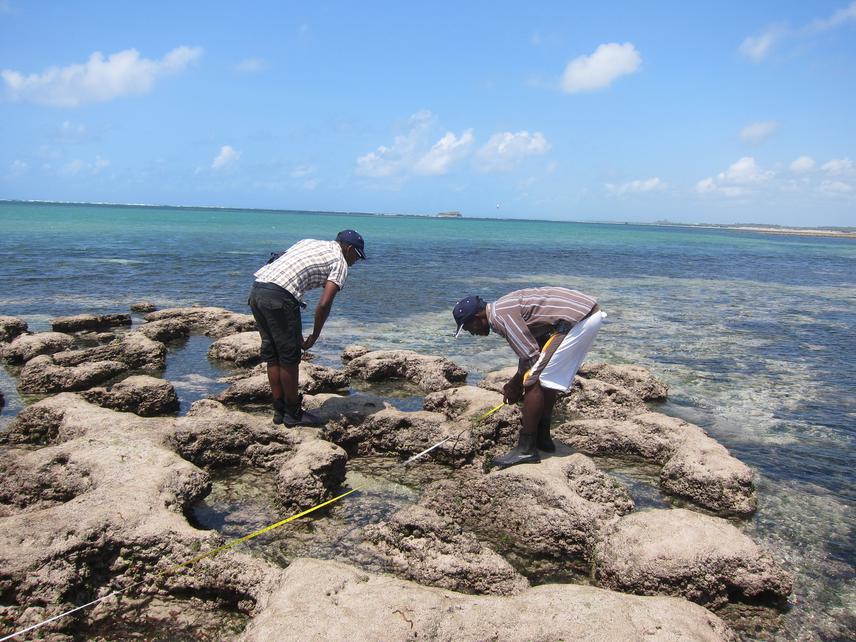Peter Musembi
The project aims at highlighting the ecological and biodiversity importance of intertidal habitats in Watamu marine national park and community engagement in its conservation through environmental education and capacity building.

Carrying out survey in the rocky Intertidal area.
The intertidal rocky platforms of Watamu Marine National Park are a biodiverse habitat, used by numerous species for feeding, nursery and resting grounds. Despite this biodiversity and their connectivity to other nearby habitats, such as coral reefs, they have been overlooked in the overall management of the park. This has exposed them to numerous potentially damaging activities including poaching, unsustainable tourism activities, damage from anchorage of boats and exposure to pollution through runoff from land based sources.This project aims at drawing attention to these intertidal areas by conducting research on both biodiversity and people and setting up conservation plan for the area. Ecological surveys of the areas will be carried out through non-destructive transect based surveys to understand the species of critical biodiversity value. Human use patterns will also be assessed to determine the potential role of humans to the well-being of habitats.
A critical part of the project will be environmental education and community capacity building. This will be achieved through participatory field excursions that will involve three community groups and eight local schools near the park. It will also include the development of a curriculum/ module for marine environmental education training for continued training after completion of project. The aim of this educational component of the project is first to foster sustainable tourism activities by the community groups which include beach and boat operators and increase their general awareness and knowledge of the intertidal habitats. Secondly, the school children will have a better understanding of the marine intertidal environment and its importance to raise a more environmentally aware generation and in time reverse the general shift in baseline expectations.
At the end of the project, dissemination of information will be done through peer reviewed journals, blogs, social media and other form of articles to cover multiple stakeholders. Of greater importance is the formulation of a participatory conservation and management plan for the inter-tidal habitats in collaboration with the community groups, other stakeholders and Kenya Wildlife service the government agency mandated to manage protected areas as part of their Strategic Adaptive Management programme.